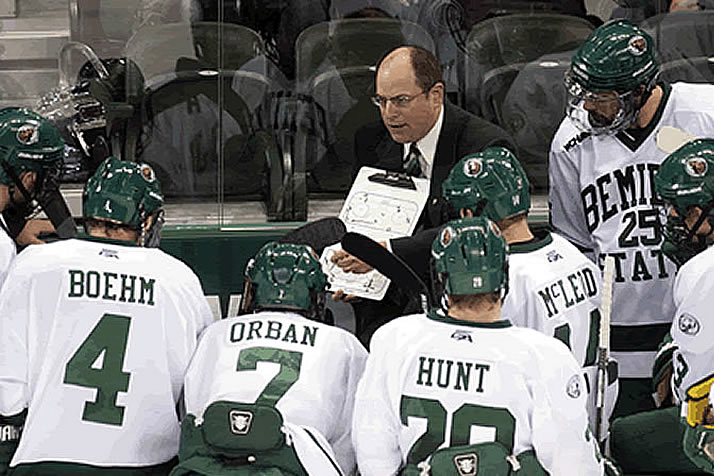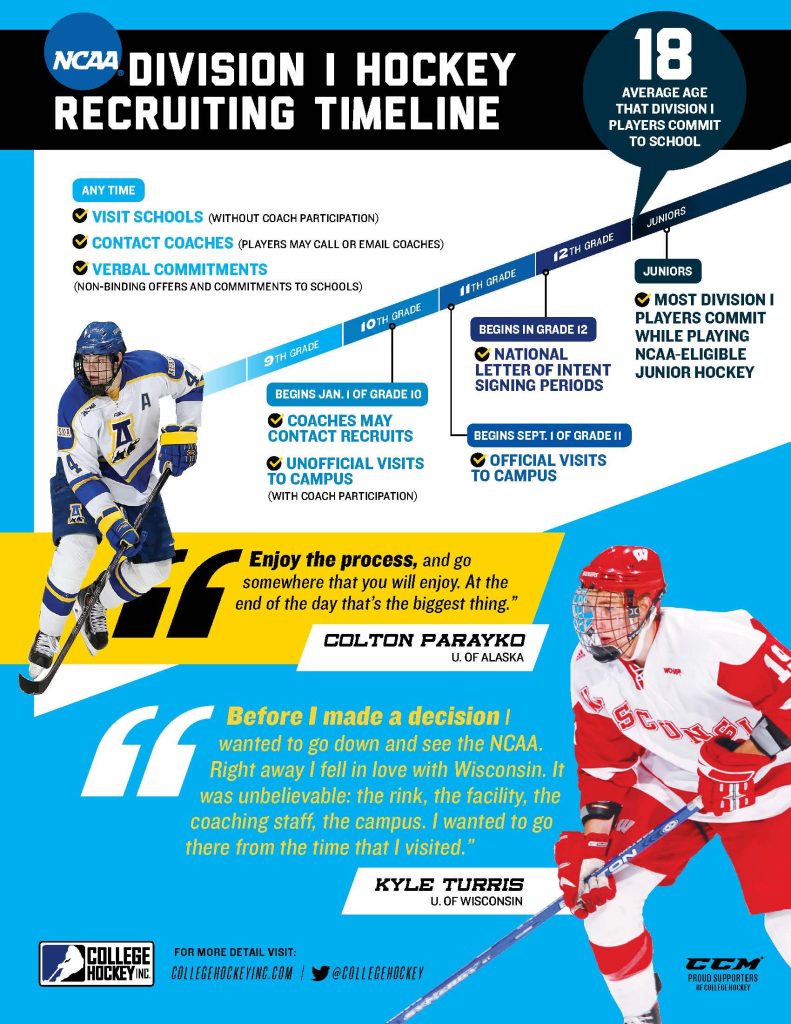Friday, December 21, 2012
Top 10 Recruiting Tips
Our very best advice when trying to attract a college coach’s attention.

(Updated July 2018)
It’s incredibly hard to make an NCAA Division I hockey team, and the deciding factor in landing one of those coveted positions typically comes down to your hockey ability. That said, there are a number of things young players and parents can do to catch the eye – and the interest – of college recruiters.
Here are 10 ways you can help your cause at the rink, in the classroom and beyond:
1. Be Proactive
College coaches are limited in when and how often they can contact recruits, and they can’t reach out to a player until Jan. 1 of his 10th grade year. Players, however, can contact coaches at any time. It can help to let a school know that you are interested with a reminder of where they can see you play. See More: Writing a Winning Hockey Resume
2. Be Studious
The better your grades and standardized test scores, the more options you will have. Only 60 schools offer Division I men’s hockey – you don’t want to narrow your field further because your marks aren’t up to par.
3. Be Aware of Eligibility Requirements
Two key elements are part of determining a student-athlete’s NCAA eligibility: their academic achievement and their amateur status. Review the requirements at eligibilitycenter.org to understand what classes and standardized test you need to take. Don’t jeopardize your amateur status by signing a CHL contract or playing in a game.
4. Be a Character Player
Coaches constantly have to make tough recruiting decisions between equally talented players. What often breaks the tie is what they can see of a players’ character in a game. Is he a good teammate? How does he respond to a bad shift, or a bad call? Always assume that someone’s watching you – they probably are. See More: Recruiting Tips
5. Be Committed to Improving
Many young players get wrapped up in playing every showcase event that they can. Coaches recognize, however, that development comes in practice, not games. Instead of signing up for every showcase, spend time working on a part of your game that has room for improvement – then show off those skills when you are back in the spotlight.
6. Be Consistent
Colleges have three coaches each who can watch recruits – they don’t employ scouts. Therefore, they can’t be at every game and they may see you on an off night. Do your best to give a consistent effort and rest assured, they see recruits multiple times before making any decisions.
7. Be Our Guest
The best way to find out whether a school is right for you is to visit campus. Prospective student-athletes may visit campuses at any time and take a tour led by the school’s admissions office. College coaches can participate in visits beginning Jan. 1 of a student’s 10th-grade year (unofficial visits) or Sept. 1 of a student’s 11th-grade year (official visits). See More: Rule Changes Timing of Visits
8. Be Inquisitive
As much as coaches want to find the right fits for their programs, they want to be sure their recruits are comfortable where they end up as well. They want to hear recruits asking questions – insightful questions – of the coaching staff, players, professors and others around their program.
9. Be a Supportive Parent
Never forgotten in this process are the parents and their significant role. It shouldn’t be too significant, however. Your son should be the one writing letters and reaching out to coaches. Coaches want to know that it’s the player’s ambition, not their parents’. Be supportive but not overbearing – coaches have to be sure they want you in their program for four years as well.
10. Be Patient
The last – and often hardest – piece of advice is to be patient. The recruiting process takes time, and prospective student-athletes can commit to schools anywhere from 15 years old to 21. Don’t get frustrated if you aren’t one of those select few who get an offer while playing minor midget hockey. Follow these other nine steps and the recruiting process can be a rewarding, exciting experience.

